Smithsonian Gardens and U.S. Botanic Garden: Capital Region Garden Bloggers Fling
As we celebrate our nation’s Independence Day today, it seems appropriate to share my pics of the Smithsonian Gardens on the National Mall and the U.S. Botanic Garden, which I toured on the recent Capital Region Garden Bloggers Fling in Washington, D.C.
A small posse of garden blogging friends — me, Cat of The Whimsical Gardener, Joanne of Down 2 Earth, Laura of Wills Family Acres, and Diana of Sharing Nature’s Garden — worked our way east along the Mall from the Smithsonian Castle, exploring the gardens outside the museums along the way. (Thanks to Cat for the photo.)
The day was pure Southern summer — hot and steamy — but we powered through a 3-hour stroll, ducking into shady gardens and an occasional museum lobby for A/C relief. Despite the heat, I found the sight of the Washington Monument stirring, as always.
My absolute favorite garden along the Mall was the Mary Livingston Ripley Garden, which wows with this dry-garden planting in the raised beds along the sidewalk. Shazam!
A closer look at the New Zealand sedge, flowering echeverias, and orange-blooming portulaca.
Silver beauties — an agave (foreground) and maybe a puya?
The conical roof in the background echoes the triangular shape of the agave’s leaves. An intentional design choice? I wouldn’t put any artistry past horticulturist Janet Draper, whom we met while we were admiring the garden. She is a talented designer and plantsman.
Coreopsis Update: My thanks to Kylee Baumle for ID’ing this as Bidens ‘Beedance Painted Red’.
Entering the garden you see a tiered fountain and plaza, with benches along the brick walls that make up the raised planting beds of the garden.
Handsome brick buildings make a nice backdrop to the garden, but the plants are the stars. I was excited to see several spherical, strappy Yucca rostrata in the lush perennials beds.
Beautiful combos
Dahlia’s dark-leaved drama
And more, with blackbird spurge
Chives
Under the shade of an old elm, chartreuse makes an appearance in hydrangea flowers and full-skirted hostas.
I like this combo of ‘Frosted Curls’ carex and wild ginger.
At the rear of the garden, a focal-point urn is planted with succulents and spilling silver ponyfoot and accented with a large steel sphere.
Additional spheres were scattered in a shady sedge “lawn.”
Along another part of the Mall, I spotted tall rudbeckia…
…and this cool bird sculpture in the garden of the American History Museum.
Eventually we made our way toward the U.S. Capitol building…
…and entered the National Garden, part of the U.S. Botanic Garden, which is planted with mid-Atlantic native plants.
The garden was mostly a wetland with a nicely designed stream and small pond, which were visually refreshing on this hot day.
It’s a good spot for bird-watching, and I spotted a robin taking a bath here.
I love this winding, cut-stone path and arching bridge.
The Botanic Garden’s centerpiece is a large conservatory, which we toured rather quickly, as we were nearly out of time.
I’ve never been a big fan of conservatories, preferring outdoor gardens, but I enjoyed our quick pass through the various collections.
It must be lovely to come here in the winter.
I’ve visited D.C. at least a half-dozen times over the years, but this was the first time I’d toured the gardens rather than monuments and museums. Unlike some bloggers who stayed extra days, I wasn’t able to visit any of the iconic monuments on this trip. That felt strange, but the Mall gardens were interesting and worth a visit. And I’m sure I’ll be back one day — if for no other reason than to see those famous cherry trees in bloom.
Up next: A woodland garden of exploration created by Peg Bier. For a look back at the classic garden rooms of designer Scott Brinitzer, click here.
I welcome your comments; please scroll to the end of this post to leave one. If you’re reading this in a subscription email, click here to visit Digging and find the comment box at the end of each post.
_______________________
Digging Deeper: News and Upcoming Events
Get on the mailing list for Garden Spark Talks. Inspired by the idea of house concerts, I’m hosting a series of garden talks by talented designers and authors out of my home. Talks are limited-attendance events and generally sell out within just a few days, so join the Garden Spark email list for early notifications. Simply click this link and ask to be added.
All material © 2006-2017 by Pam Penick for Digging. Unauthorized reproduction prohibited.


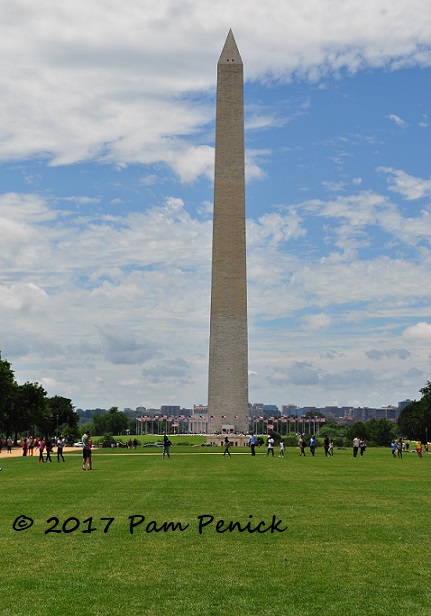
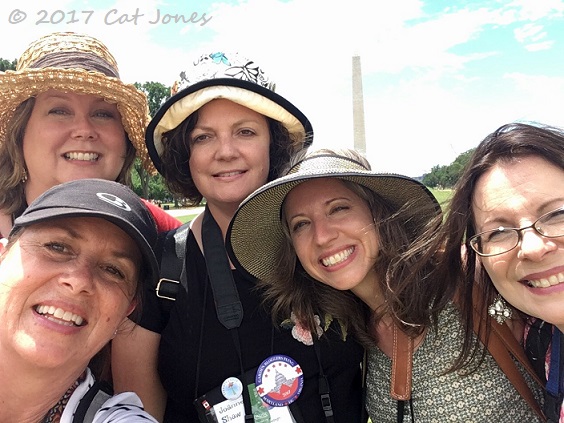
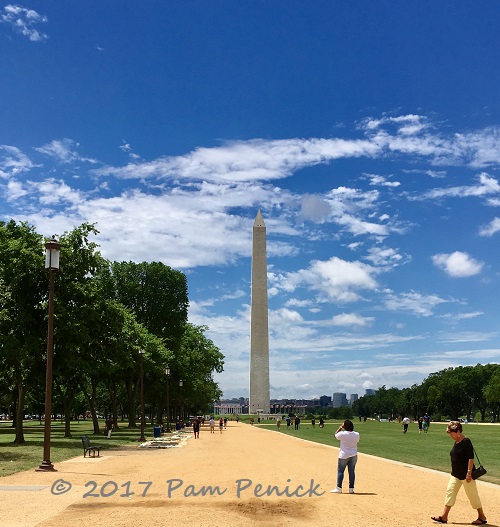
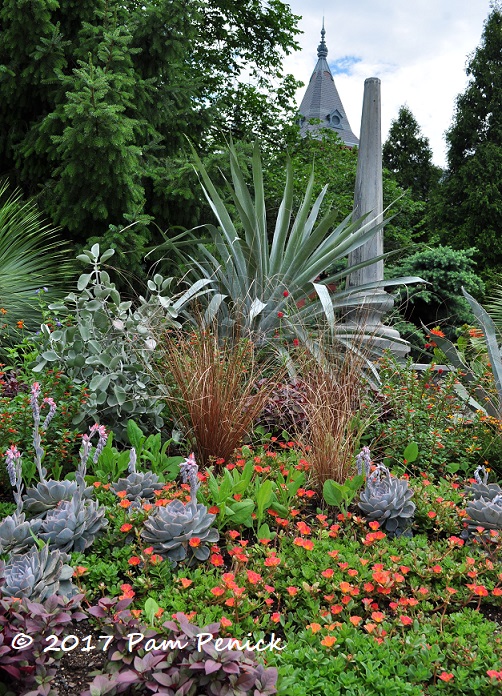
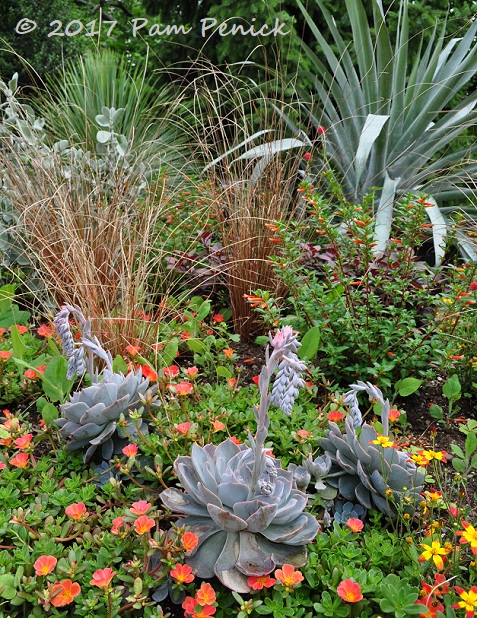
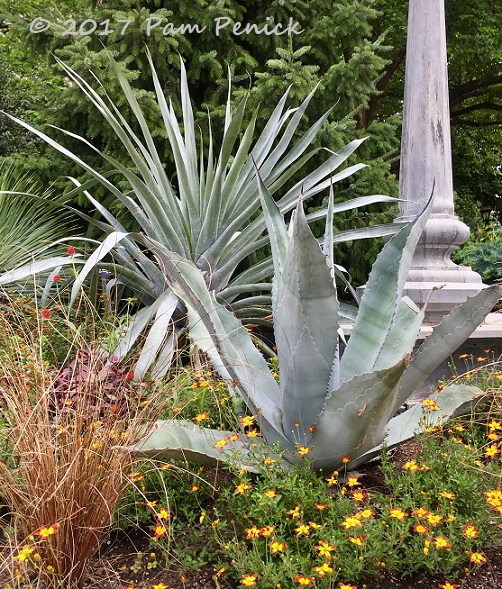
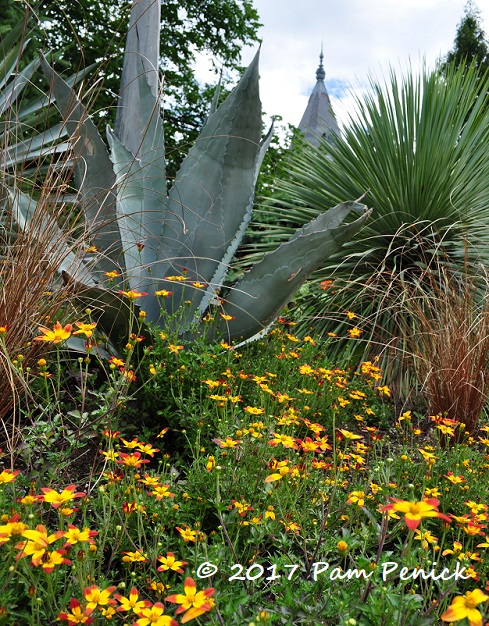
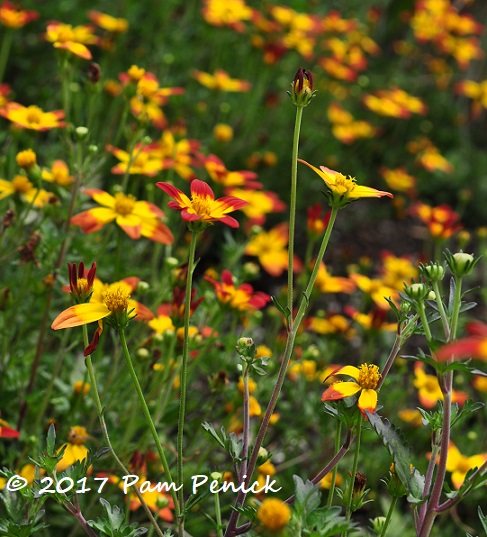
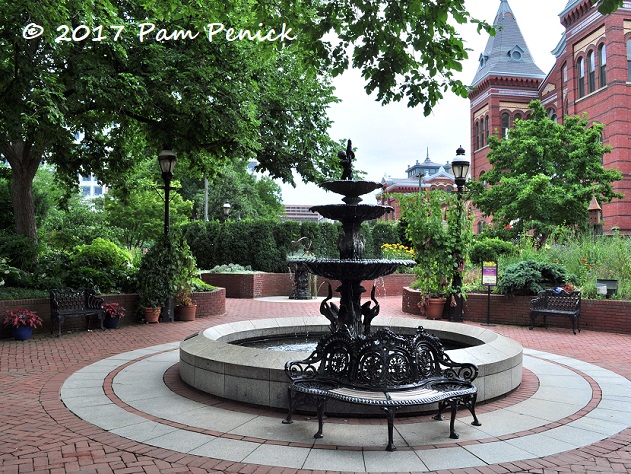
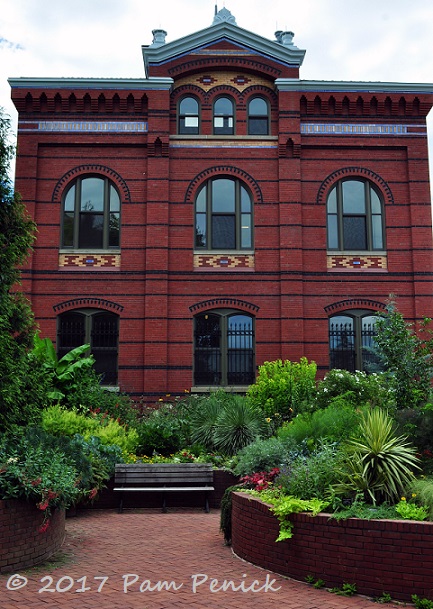
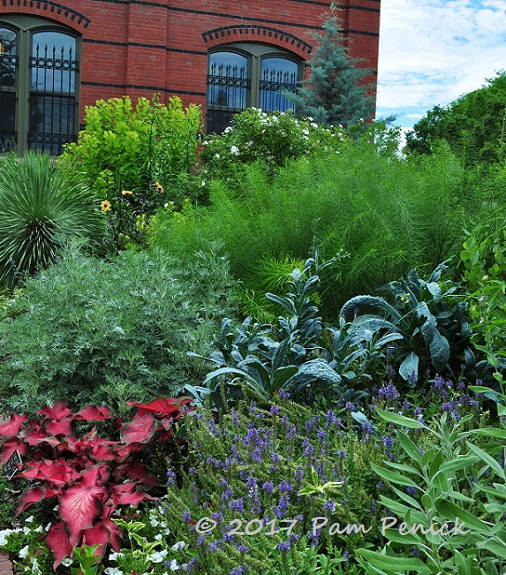
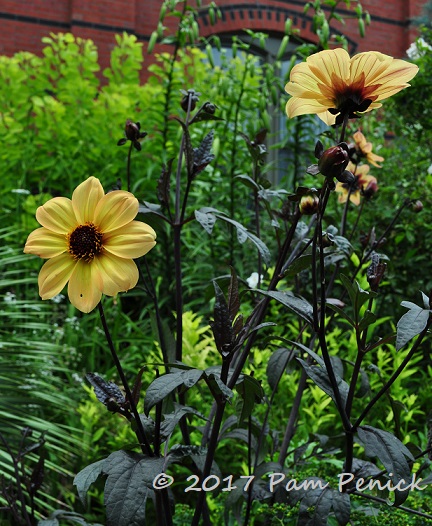
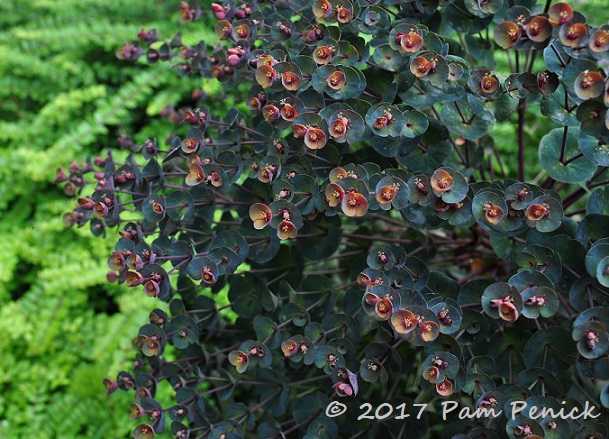
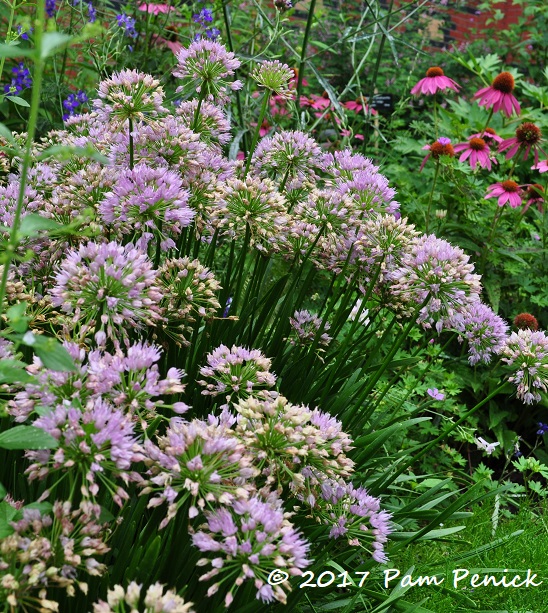
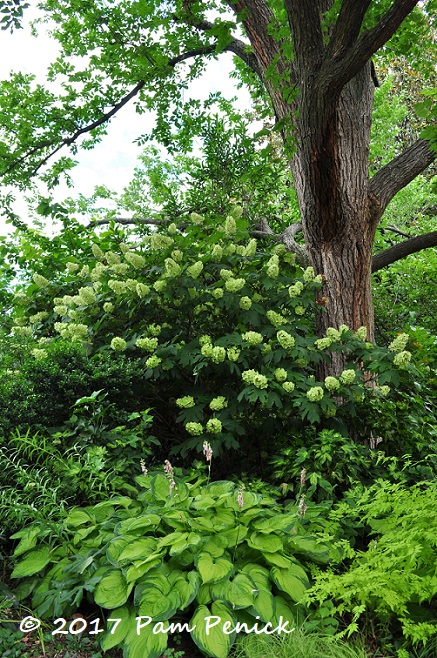
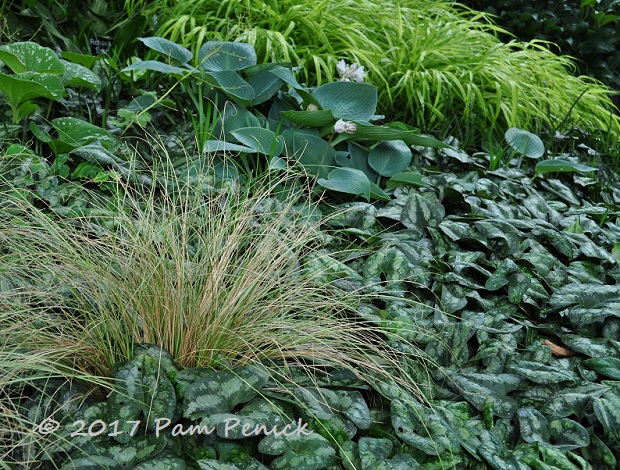
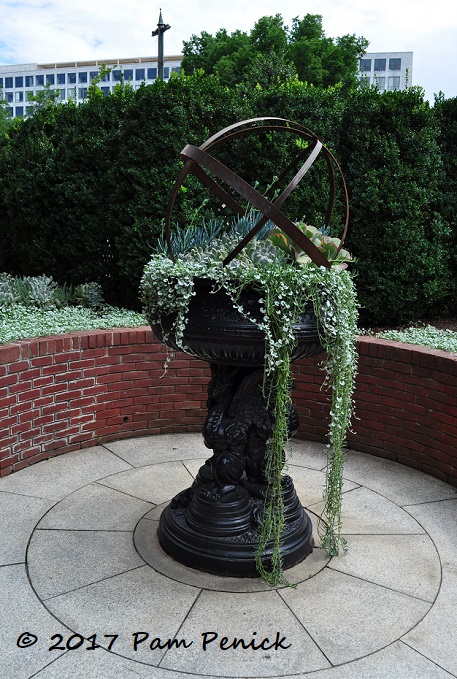
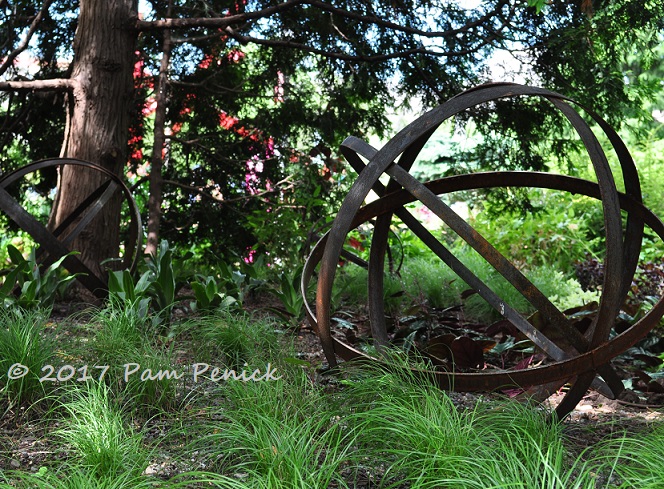
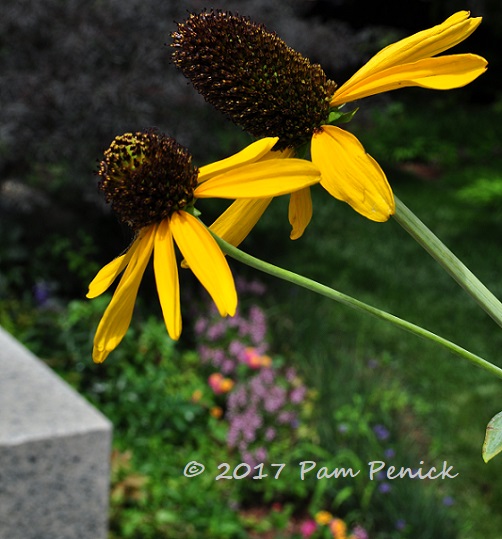
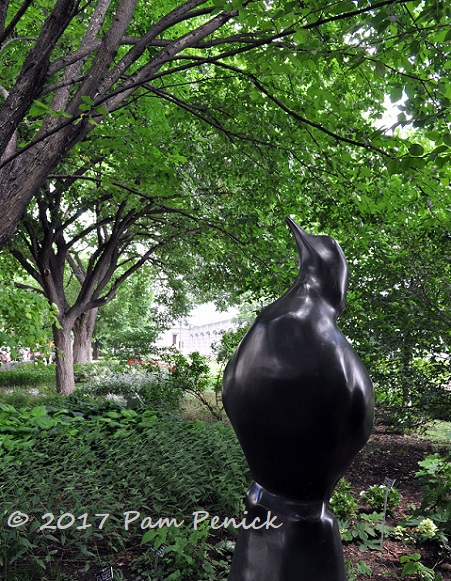
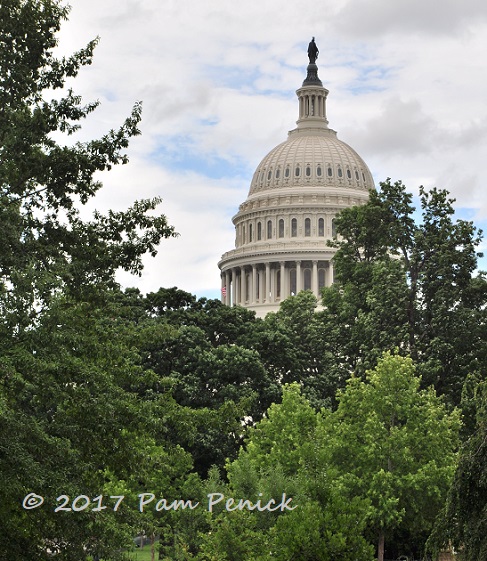
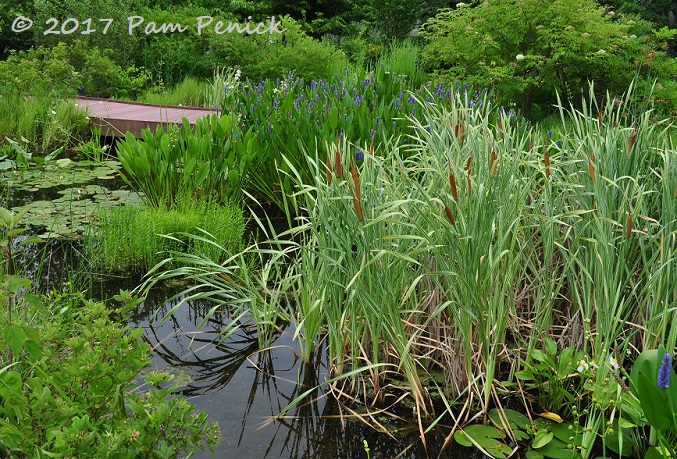
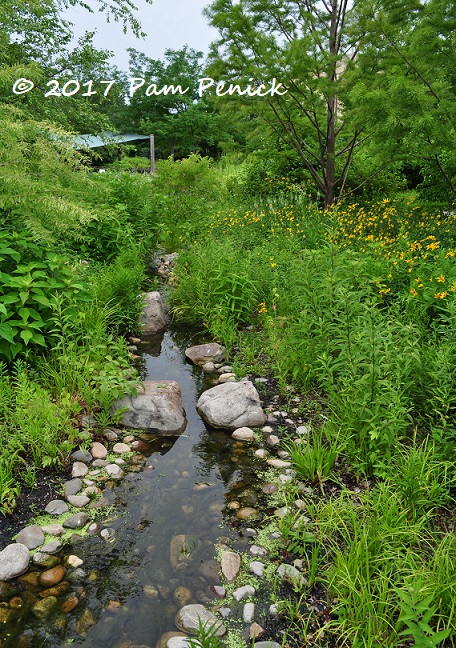
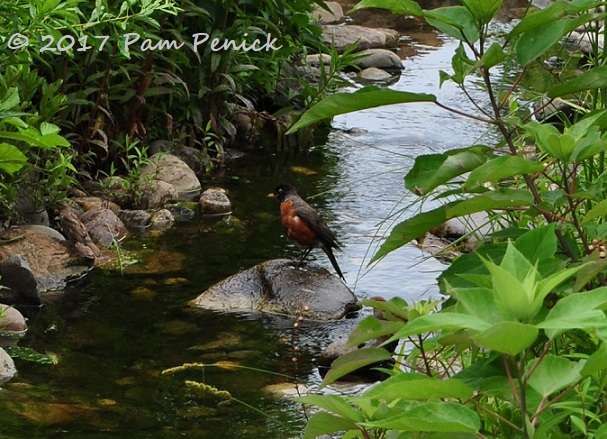
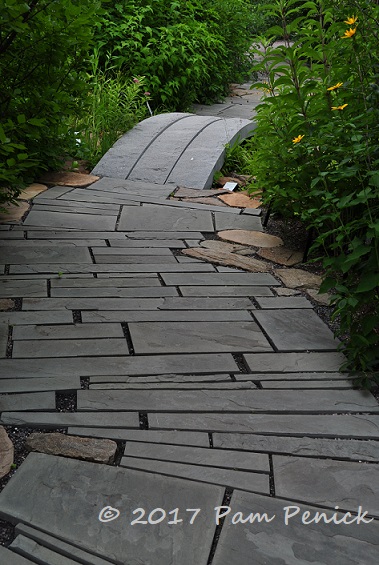
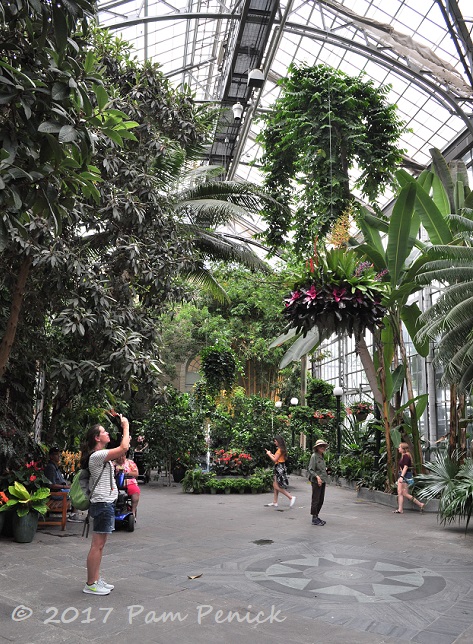
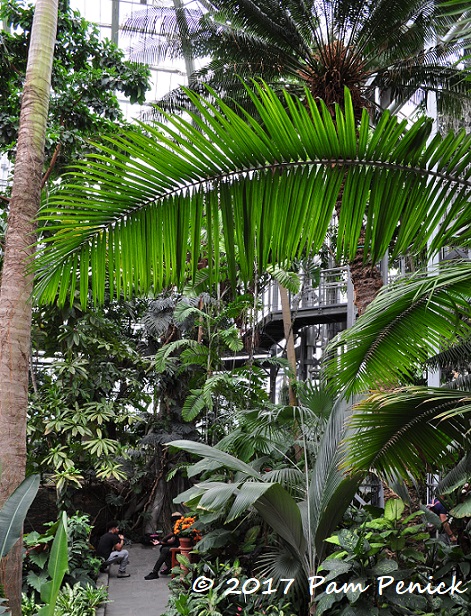
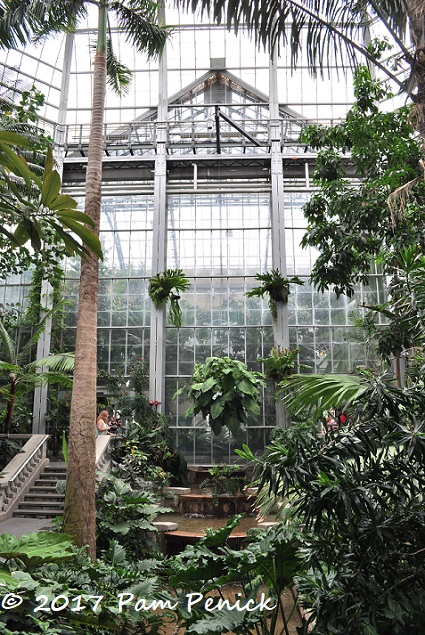
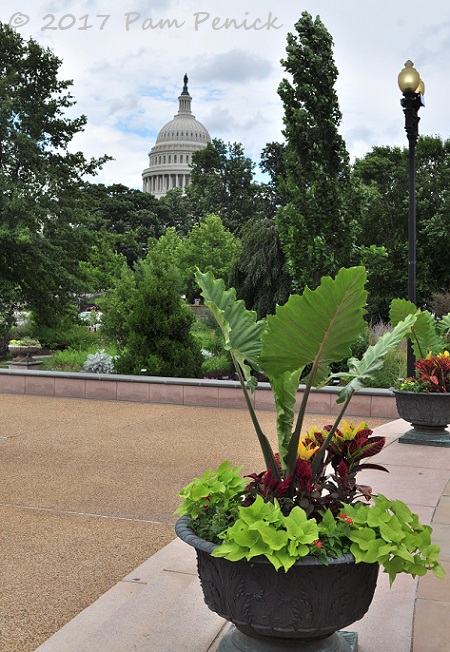
All of those planters were inspirational. It is amazing how succulents have been integrated in the more northern gardens. I know if I had someplace to keep them over winter I would have more of them. Maybe with global warming I will, in my lifetime, be able to keep some of those big agaves etc over winter.
I’ll be moving north then, Lisa, as I can’t handle any more warming than we already have in a Texas summer. 😉 —Pam
Stunning gardens. I’m a fan of conservatories in the winter and early spring when a gardener just needs a taste of the tropics to keep the summer dreams alive. Sounds like the heat and humidity were a bit much for some folks.
I suspect that conservatories are more loved in climates where winter is challenging — either cold or dreary — so your comment, as a resident of the Pacific NW, makes a lot of sense to me. My summer dreams always consist of escape to the cool mountains of Colorado. 😉
P.S. Hope you had a great Independence Day!
I loved the Ripley Garden and the Botanical wetlands garden! Both spoke to me of pollinators and happy two legged visitors! We found a cool spot in the Conservatory and rested there with other Flingers!
Yes, lots of pollinators too. Despite the heat, it was a good day of seeing gardens, wasn’t it? —Pam
I’m so glad you posted these photos, Pam, because somehow Julie and I missed this garden. 🙁 Everyone said it was the best of all the Smithsonian gardens. I guess I’ll just have to make another trip and take Romie the next time. He’s never been to D.C.
I think that’s Bidens Beedance, not a Coreopsis. I could be wrong, but the Bidens is a hot plant right now and is being used everywhere. I grew it two years ago as a trial plant and then bought it last year. There’s a new one that’s not quite as rangey as the original, that I saw at Spring Trials last year. I forget the name of that one, but it’s of shorter stature and more dense, which I would like.
Oops. Missed my closure on the HTML for italics! Also wanted to add that I could be wrong on the plant ID, of course. Maybe it was labeled?
Kylee, thank you for the Bidens ID. I think you’re exactly right! I’ve not seen this plant before, but now I’m wondering how it would like Austin. Oh, and I fixed the HTML — impressive that you were working the italics in a comment!. —Pam
What a lovely piece—thank you! And next time you’re up here, check out the butterfly garden along a double sidewalk next to the Museum of Natural History. The garden runs all the way from Pennsylvania Avenue to Constitution Avenue and it’s splendid.
Thanks for the tip, Nancy! —Pam
The Ripley garden was my favorite along the National Mall too, and the only one I feel I explored fully in the area. This was one of the venues where we could have used more time – and cooler, less humid weather!
Wouldn’t it have been nice if that cooler air had arrived on Friday instead of Saturday? Although maybe that’s looking a gift horse in the mouth, as I know we got really lucky with the lower humidity we enjoyed on Saturday and Sunday. At any rate, yes, the Ripley Garden is a standout. —Pam
DAMN your photos are good!
Thank you, Susan. Missed seeing you this time, but hope to see you in Austin for the 10th anniversary Fling. —Pam
Your pictures are great! Some of those plant combinations were fabulous. I love how different people groups plants together, so many possibilities.
I do too, Rebecca. It’s one of the reasons I love visiting gardens. —Pam
Also loved the Ripley garden and talking to Janet Draper about Dutchman’s pipe – which I’ll be writing about soon. Glad we had the chance to explore these on our own, though that did mean we missed bits here and there. Good post, Pam.
Thanks, Helen. I look forward to reading about your talk with Janet about Dutchman’s pipe. —Pam